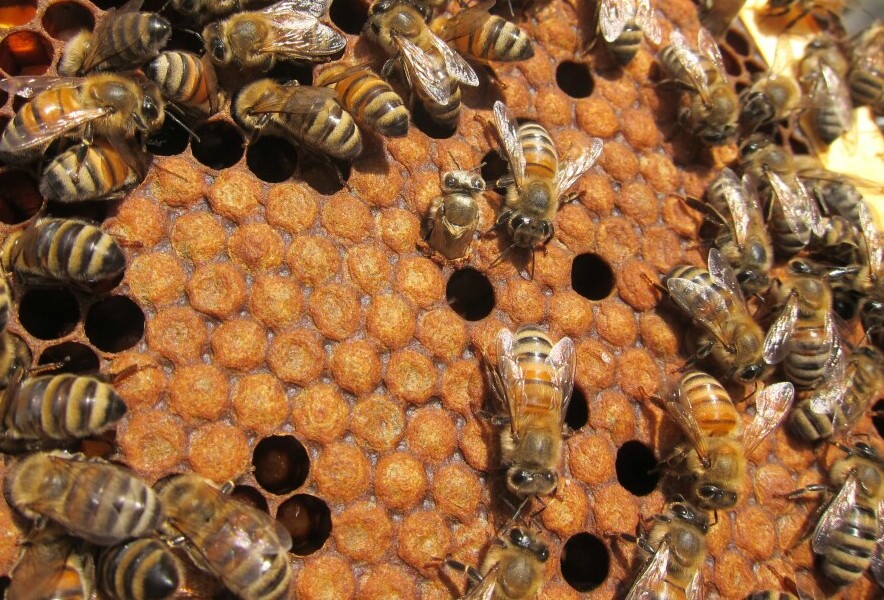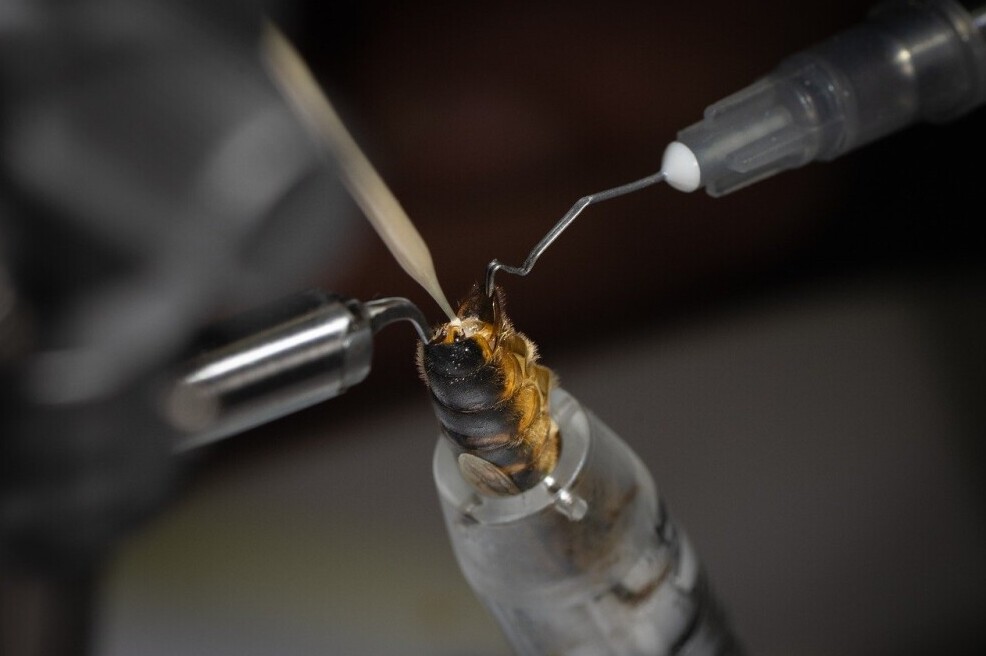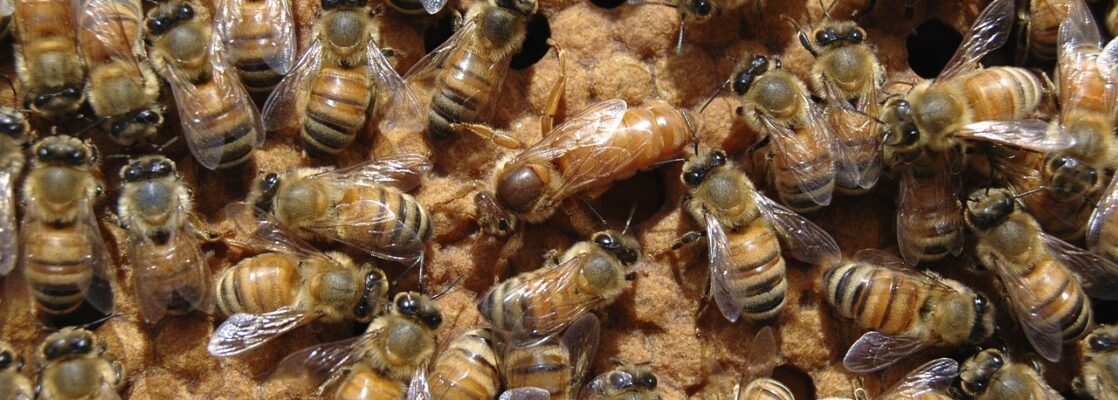Queen bee management isn’t just a fancy term—it’s a critical aspect of beekeeping that can make or break your hive. Let’s kick things off by understanding the role of the queen bee and why her management is so vital.
First, you have to know that the queen is the only bee in the colony that’s fertile. She’s got one job: laying eggs. And she does it like a boss, laying up to 2,000 eggs a day during her peak! Her other role? Keeping the colony together using chemicals called pheromones. These pheromones help maintain hive unity and productivity.
Good queen bee management starts with understanding her key impact. A well-managed queen leads to a thriving hive, packed with productive workers, healthy brood, and plentiful honey. Think of her as the linchpin of your colony’s success.
When the queen’s in good shape, worker bees are energetic and focused. Poor queen quality? You’ll see sluggish workers, fewer eggs, and the hive may try to replace her. Even the quality of honey can decline.
Last but not least, effective queen bee management affects the entire ecosystem your bees are part of. Pollination, honey production, and even the future of bee populations are in your hands. Trust me, knowing the ropes here isn’t just beneficial—it’s crucial for anyone serious about beekeeping.
Selecting and Introducing a New Queen Bee
Choosing a new queen bee for your hive isn’t something you should take lightly. Let’s talk about how to select and introduce a queen bee in the best possible way.
First off, health is key. Pick a queen bee that’s free of diseases and pests. Look for one with a solid laying pattern and vibrant, consistent coloration—a pale or spotty queen might have issues that will affect the whole colony.
Next, introduction methods matter big time. The most common way? Using a queen cage. Place the queen in a small cage with a few worker bees and a candy plug. The existing hive will chew through the candy to release her. This gradual release helps the hive adjust to her scent, reducing the risk that they’ll reject or even attack her.

Avoiding common pitfalls is also crucial. Don’t rush the process. Patience during the introduction phase is vital. If the hive isn’t ready or the queen is introduced improperly, you could end up with a dead queen and a hive in chaos.
A helpful tip: Make sure the hive is queen-less before introducing the new queen. If any remnants of the previous queen’s pheromones are present, workers might reject the newcomer. Double-check by doing a thorough inspection—there should be no signs of fresh eggs or larvae younger than three days.
Finally, keep an eye on them. After introducing the queen, monitor the hive regularly for the next few weeks. Look for signs of acceptance like organized brood patterns and workers attending to her needs. These indicators will reassure you that the introduction has been successful.
Monitoring and Assessing Queen Bee Performance
Keeping tabs on your queen bee’s performance isn’t a passive job. Active monitoring and assessing her health and productivity are essential for a thriving hive.
Start with the basics: check for a healthy brood pattern. A good queen lays eggs in a tight, consistent pattern without many gaps. Spotty brood patterns can indicate an underperforming or sick queen. Lift up a few frames during your inspection to get a look at her laying handiwork.

Pheromone production is another key indicator of a queen’s quality. Bees use her pheromones to stay organized and productive. If you notice disorganized or overly aggressive behavior among the worker bees, that could be a sign her pheromone output is waning.
Regular inspections are your best friend. Aim to check your hive every week or two, especially if you’ve recently introduced a new queen. Look for changes in brood pattern, worker behavior, and even the queen’s physical condition. A well-run hive usually points to a well-functioning queen.
Recording your observations helps too. Note down things like brood pattern quality, queen sightings, and any unusual behaviors. Over time, these records can help you detect patterns and catch issues early. A simple notebook or a dedicated app can do wonders for keeping everything organized.
Lastly, don’t hesitate to involve a mentor or fellow beekeeper if you’re unsure or spot potential issues. An extra set of experienced eyes can make all the difference. Plus, beekeeping is a community affair—sharing knowledge benefits everyone.
Addressing Common Queen Bee Problems
Nobody wants a hive drama, but sometimes, queen bee issues pop up. Recognizing the signs early on can save you a lot of headache.
First up, let’s talk about signs of a failing queen. Look out for an erratic brood pattern or dwindling egg-laying rates. If eggs and larvae start to get sparse, it’s a red flag. The colony might even show signs of disorder or aggression.
A queen-less hive needs immediate attention. The workers may start to panic, and the hive could quickly spiral into chaos. You might see laying workers trying to take over, which isn’t ideal as their offspring will just be drones. In this case, you’ll need to introduce a new queen swiftly. Remember, a calm and queen-right hive is a healthy hive.
Swarming and supersedure issues are also common. Swarming usually happens in spring when the hive gets too crowded, prompting the old queen and a portion of workers to leave in search of a new home. Pre-emptively creating space and splitting hives can help mitigate swarming. Supersedure occurs when bees try to replace an underperforming queen. If you spot several queen cells, the hive might be planning a replacement. In this case, evaluating whether to intervene or let nature take its course is key.

If you encounter these issues, don’t panic. Address them methodically, keeping the hive’s overall health in mind. Regular monitoring and timely interventions are your best antidotes to queen-related headaches.
Advanced Queen Bee Management Techniques
Taking your queen bee management skills to the next level involves diving into some advanced techniques that can really make a difference in your hive’s productivity and health.
Let’s start with artificial insemination. This is a technique used by many professional beekeepers to control genetics and improve hive traits.
It allows you to selectively breed queens with favorable characteristics like higher honey production, disease resistance, or gentleness. It requires special equipment and training, but the results can be well worth the investment.

Grafting is another powerful method. It involves transferring larvae from worker cells into queen cups to raise new queens. This technique gives you more control over queen production and helps ensure that you always have a strong, healthy queen ready to go. Plus, it’s a way to sustainably manage your hive and reduce reliance on external queen suppliers.
Don’t overlook the value of breeding programs. By systematically tracking and selecting for desirable traits, you can gradually improve your hive’s overall performance over time. Detailed record-keeping is crucial here, allowing you to track lineage and make informed breeding decisions.
Innovation in queen bee management doesn’t stop there. Some beekeepers are experimenting with novel approaches like using thermal chambers to enhance queen mating and implementing genetic testing to select the best queens. These cutting-edge techniques can push your beekeeping practice to heights you might not have imagined.
Remember, advanced techniques require patience and a willingness to learn. The more you invest in understanding and implementing them, the greater the rewards for both you and your hive. Whether you’re looking to maximize honey production, reduce disease, or create the gentlest bees, there’s a world of possibilities with advanced queen bee management techniques.

4 comments on “Queen Bee Management”
Isaac
August 27, 2024 at 1:10 amThis article does an excellent job of highlighting the importance of queen bee management in beekeeping. I appreciate the detailed explanations of various techniques, from basic practices to advanced methods like artificial insemination and grafting. The emphasis on monitoring and assessing queen performance, along with addressing common issues, is particularly valuable for both novice and experienced beekeepers. The step-by-step guidance on selecting and introducing a new queen is especially helpful. Overall, the article provides a comprehensive overview that can help any beekeeper improve hive productivity and health. Great insights and practical tips!
Randi
August 27, 2024 at 3:24 amThanks for the kind words! I’m glad you found the article helpful and comprehensive. Queen bee management is such a vital part of beekeeping, and it’s great to hear that the detailed explanations and step-by-step guidance were valuable to you. Appreciate your feedback!
Miracle
August 27, 2024 at 1:11 amis not just a buzzword—it’s an essential part of beekeeping that determines the success or failure of your hive. The queen bee plays a pivotal role as the only fertile bee in the colony, responsible for laying up to 2,000 eggs daily at her peak. She also emits pheromones that keep the hive cohesive and productive.
Effective management of the queen bee is crucial. A well-managed queen ensures a thriving hive with productive worker bees, healthy brood, and abundant honey production. Conversely, a poorly managed queen leads to sluggish workers, fewer eggs, and potential hive disruption, including attempts by the colony to replace her.
Randi
August 27, 2024 at 3:23 amThanks for reading and sharing your thoughts! I’m glad you found the insights on her role and the importance of management helpful!